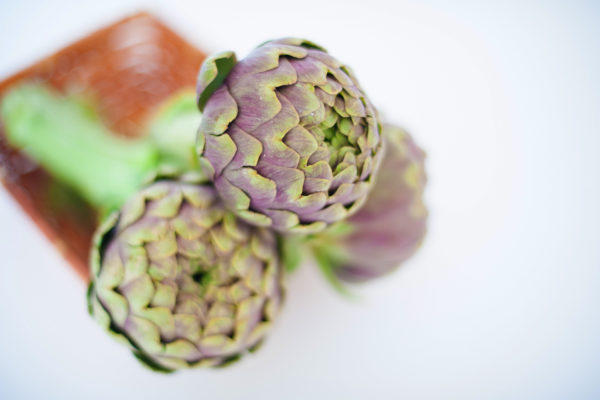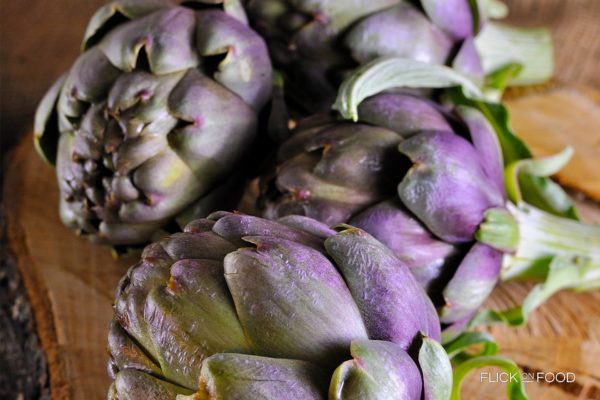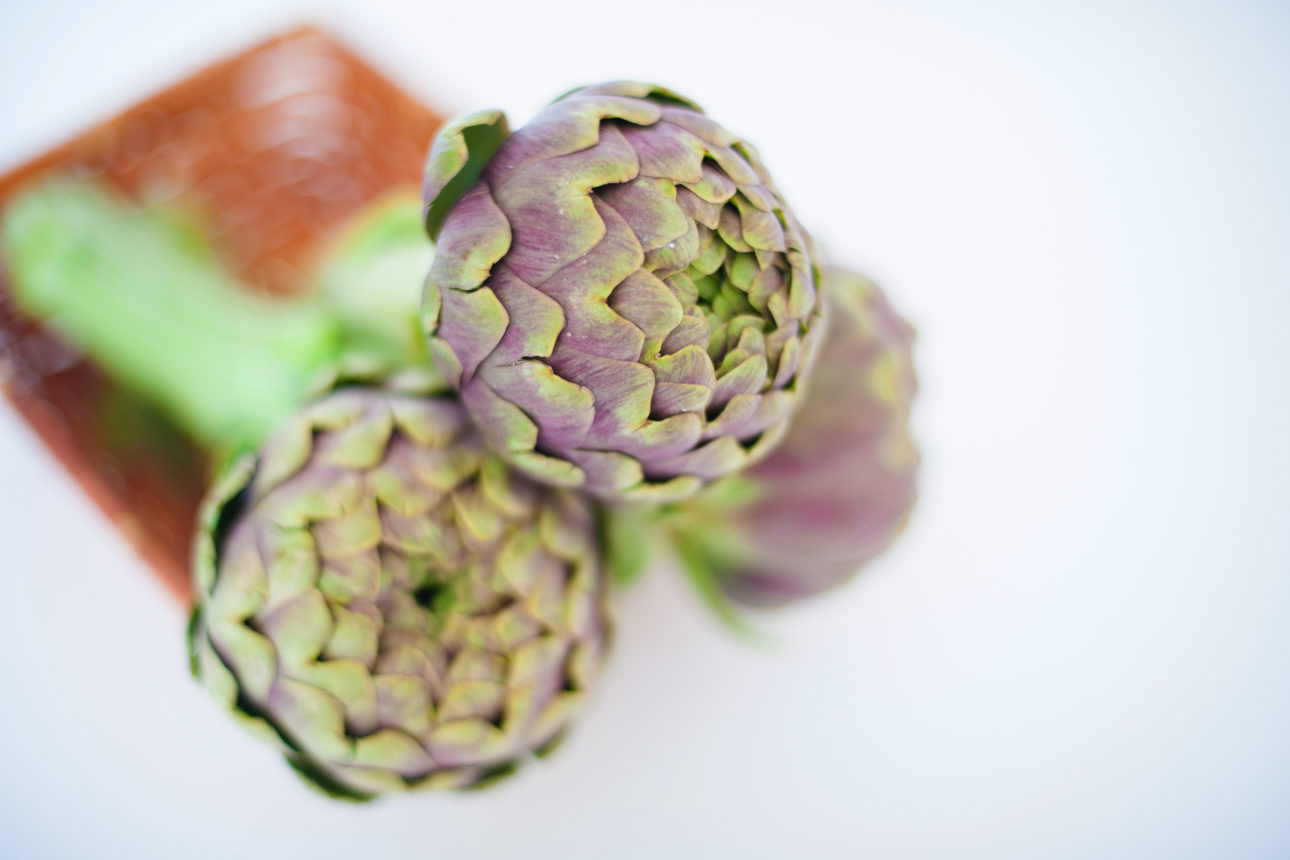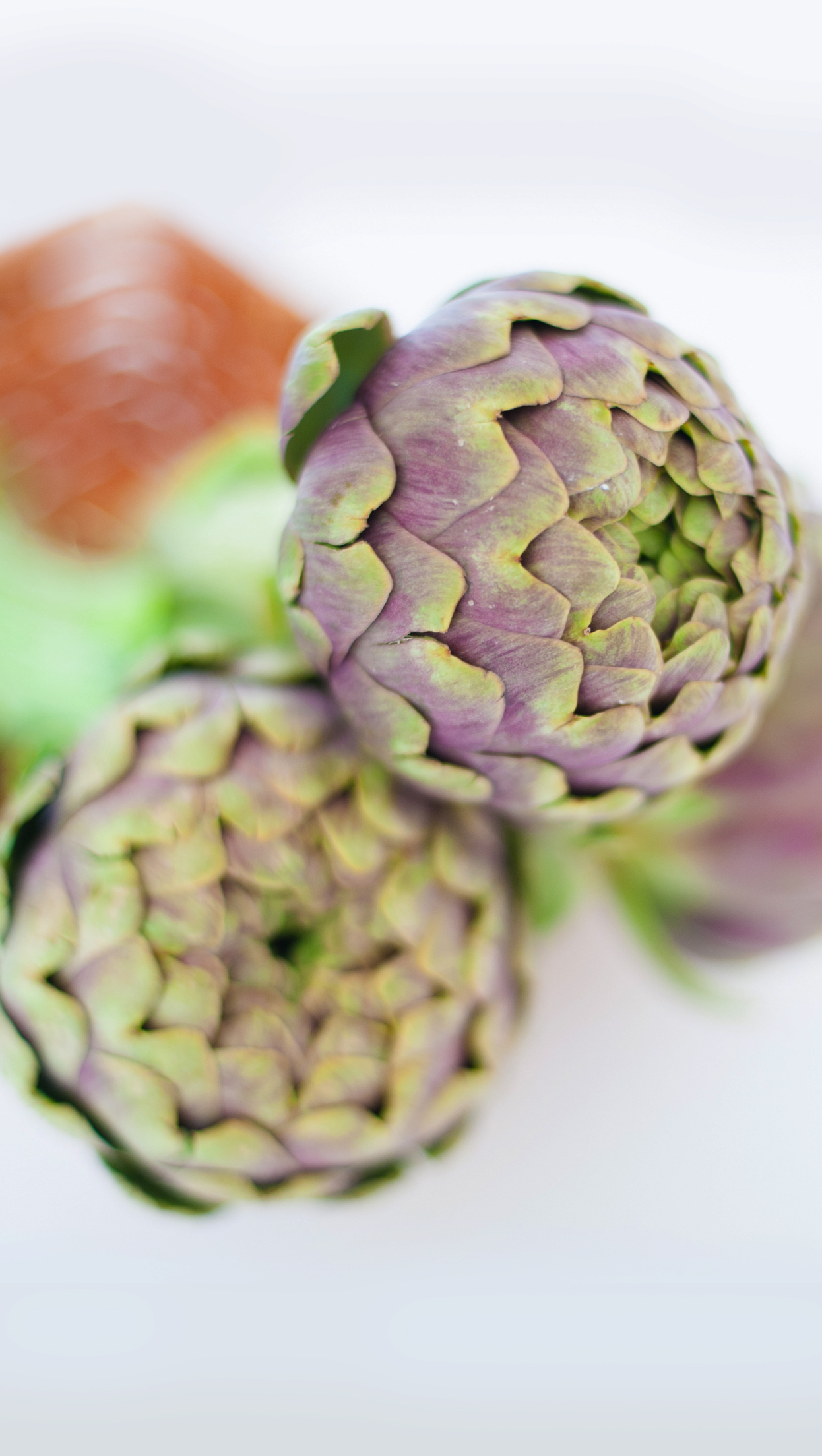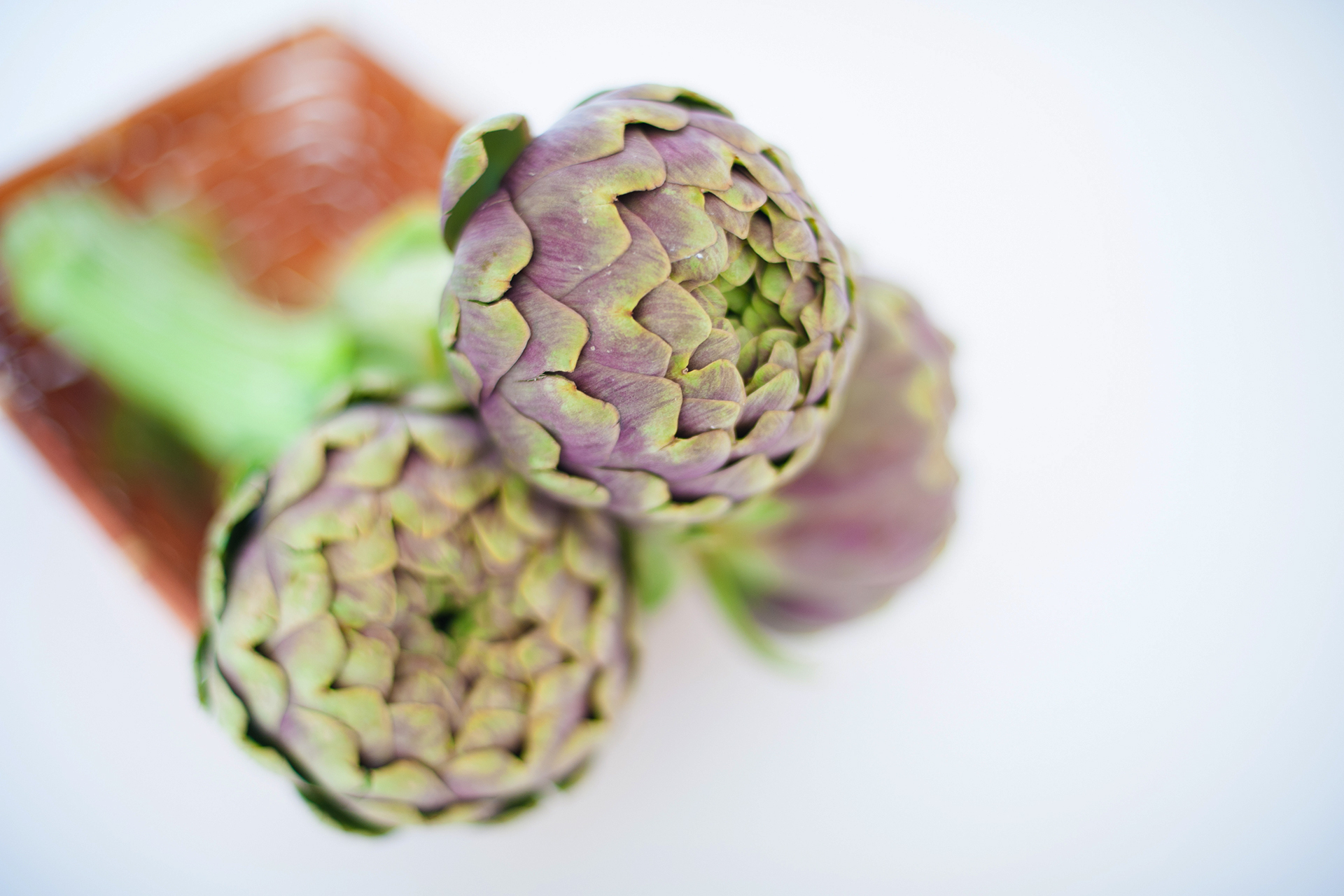
A tender variety with no spikes, noted for the traditional recipe “alla romana”.
Origin
Autumn is the season of healthy vegetables, and one that definitely deserves a seat of honor is the artichoke. Rich in vitamins and minerals, artichokes are a real cure-all for the body. Among the famous varieties, the Romanesco PGI from Lazio is particularly special. Cultivation starts in December and goes until May in a defined area in the provinces of Viterbo, Rome and Latina. In particular, it includes the towns of Montalto di Castro, Canino, Tarquinia, Allumiere, Tolfa, Civitavecchia, Santa Marinella, Campagnano, Cerveteri, Ladispoli, Fiumicino, Roma, Lariano, Sezze, Priverno, Sermoneta and Pontinia. The variety is unique not just for its especially sweet flavor, but also because it’s a treat for the senses. It doesn’t have spikes or fuzz, and its “bracts” or leaves are green with purple veining. Among growers the name Romanesco artichoke PGI of Lazio is associated with the cultivar “Cynara scolymus L.” which derives from the cultivars “Castellammare” and “Campagnano”.
Cookit
Artichokes are a very versatile vegetable. Their strong flavor and tenderness make them perfect for many recipes. They cook in just fifteen minutes, and are excellent as a side dish with fish or cheese. Romanesco artichokes PGI of Lazio are known for the traditional recipe “alla romana”, where they are stuffed with garlic, parsley and mint and cooked in water and white wine. If they’re fried, they go by the name of “alla Giudia”. If you want to try a chic cooking method, soak them in water and lemon or ice, so they take on a lovely golden color when fried. Young, tender artichokes can also be eaten raw, cut in strips and dressed with oil, lemon and a bit of mint, and maybe some shavings of Parmigiano Reggiano.
Did you know
The head of this variety of artichoke will have a violet flower, and is characterized by a spherical, compact shape with a diameter above 10 cm and without any spikes. For this reason, they’re highly in demand, for the lack of spikes, tenderness and strong flavor. They’re rich in minerals like potassium, magnesium, calcium and Cynarine, the substance that makes it bitter and that aids digestion. They’re also diuretic and cleansing, and useful in lowering levels of bad cholesterol. Compared to other artichokes, waste is minimal because even the outer leaves (except the very first layer) are edible, on at a time, if you scrape off the soft surface with your teeth. There are many events that promote this speciality ingredient, including the festival in Ladispoli (RM) and the festival in Sezze (LT).



